There is a saying among the safari guides of Rajasthan’s Ranthambhore National Park that if you spot a mongoose in the forest, chances are you will see a tiger too — the most sought-after and cherished of all big cat sightings across India’s wildlife parks. On my first-ever visit to the national park recently, our group saw not one but two mongooses. Naturally, our expectations were sky-high.
Spread over 1,334 square kilometre, Ranthambhore National Park is home to 80-odd Royal Bengal tigers, including a dozen cubs. Among the first nine tiger reserves delineated under the Indian government’s Project Tiger program back in 1973, it is named after the majestic 10th Century battle outpost of Ranthambhore Fort, a UNESCO World Heritage Site.
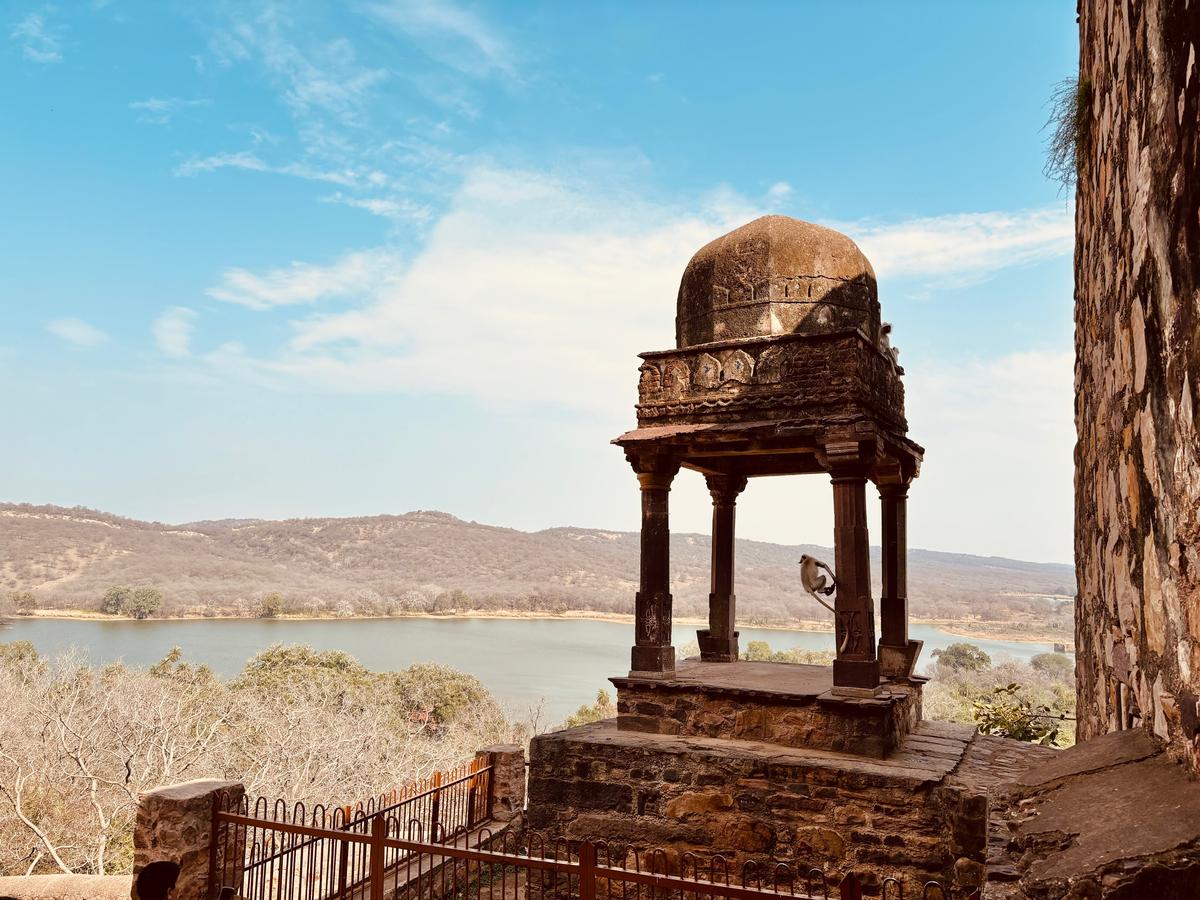
Ranthambhore Fort | Photo Credit: Julie Merin Varughese
Though the fort is often overlooked in favor of the more popular national park it is surrounded by, it has a rich and colorful history of its own, best narrated by the forest department’s guides who are adept at rattling off both facts and legends. “Did the kings and queens live here?”, “Did soldiers pour hot oil on invading armies through the fort’s windows?”, “Did Queen Padmavati and her entourage commit Jauhar (self-immolation)here?”, “Do the tigers prowl about here?” Guide Nadeem stoically handles our interrogation while steering us through long flights of stone steps and pointing out the fort’s architectural marvels. By the end of the roughly two-hour tour, we have managed to clock in our steps for the day and work up a solid appetite for lunch.
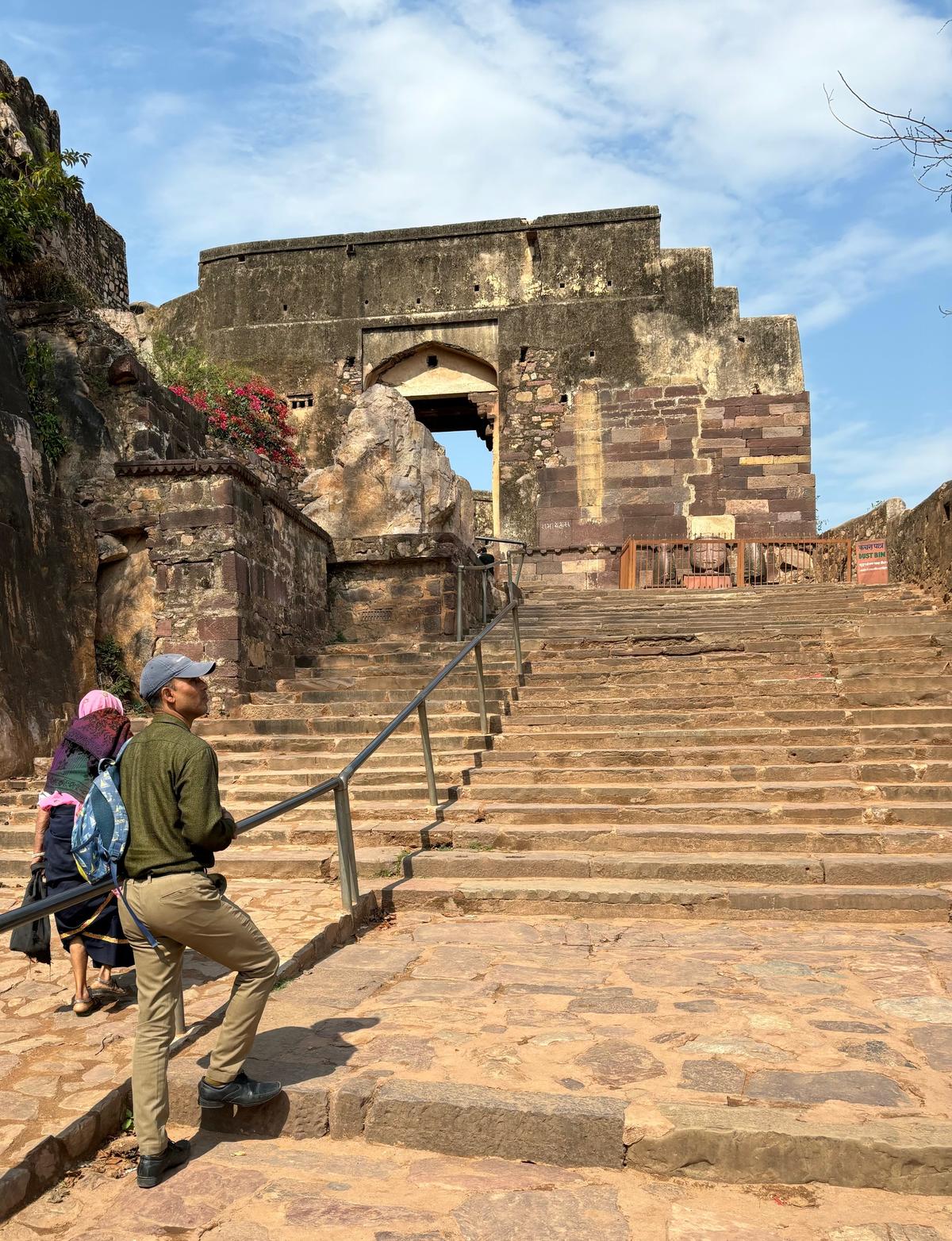
Ranthambhore Fort | Photo Credit: Julie Merin Varughese
Famous felines
After a refreshing meal back at our hotel, the newly-opened Bookmark Resorts Jogi Mahal in Sawai Madhopur, about 5 kilometers from the national park, we head out for the afternoon safari in a six-seater jeep. The previous day, there were news reports of tourists having sighted tigress Riddhi (T-124) (every tiger in India is given a number) splashing about with her cubs at one of the watering holes inside the forest. And just as our vehicle makes its way inside, we hear of yet another sighting. Riddhi again? It leads to a mini traffic jam as tourist vehicles stall indefinitely in hopes of a glimpse of the tiger.
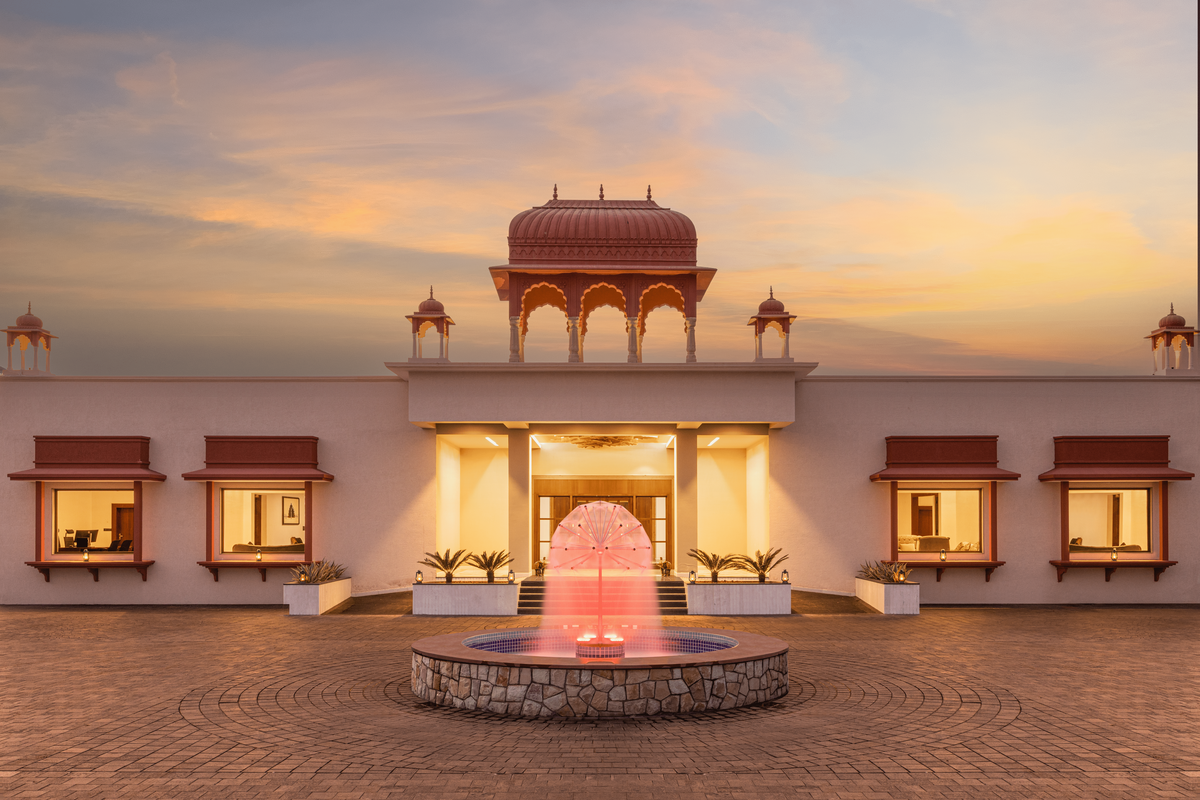
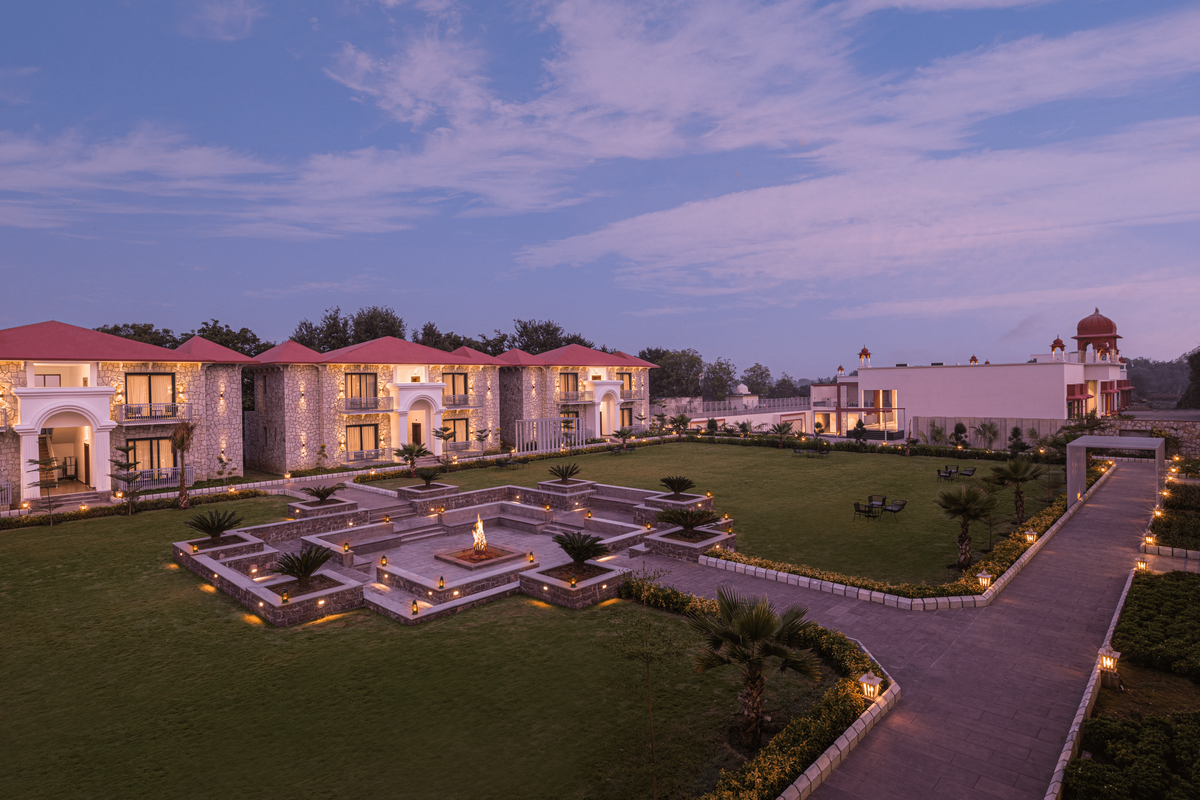
Bookmark Resorts Jogi Mahal in Sawai Madhopur, about 5 km from Ranthambhore National Park. , Photo Credit: Special Arrangement
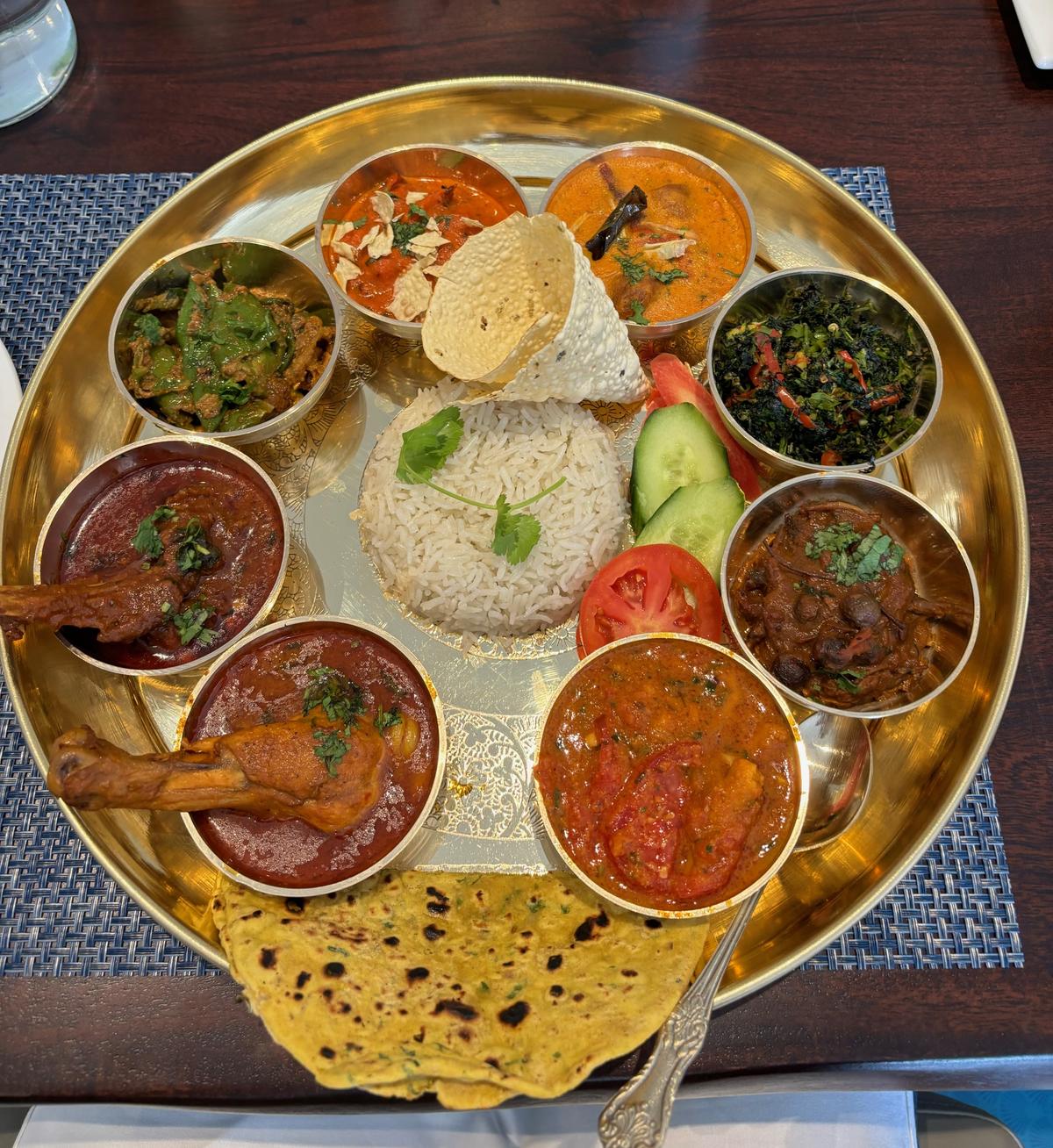
Rajasthani thali at Bookmark Resorts Jogi Mahal. , Photo Credit: Julie Merin Varughese
Besides tigers, the national park has leopards, chitals, sambar deer, nilgai, langurs, and other smaller mammals, nearly 35 species of reptiles, 320 species of birds and 300 species of trees. The 10 zones that the park is divided into also has several man-made watering holes where the wildlife flocks to, especially during the summer months. Stopping at a couple of these spots, we see baby langurs clambering up trees as chitals stand around serenely drinking water. Our guide also helpfully points out the many birds, including peacocks, camouflaged atop the tall trees of the dry deciduous forest.

Chital at Ranthambhore National Park | Photo Credit: Julie Merin Varughese
On our way back, we nearly miss the leopard lurking in the wild grass near a herd of chitals until one of them lets out a sharp cry warning its mates and tipping us tourists off to the presence of the big cat. We click away in vain at the quickly retreating figure but are nevertheless excited about our first “major” sighting of the day.
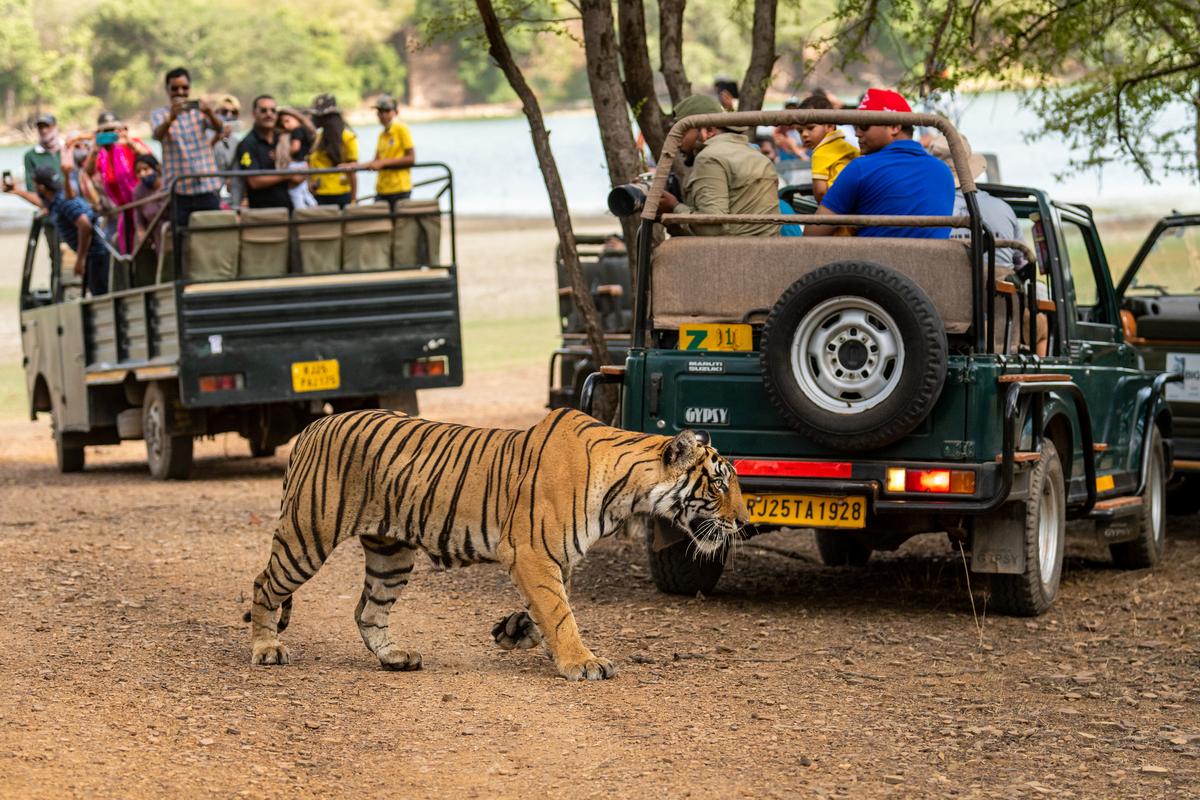
A tiger goes around safari vehicles at Ranthambhore National Park. , Photo Credit: Getty Images
Later that evening in our hotel, we are treated to stories of Machhli, Sundari, Sultan, Arrowhead and Ranthambhore’s other famed felines by resort naturalist Vishnu Dayma. We can sense the aura of the big cat around us. Large photos and murals dedicated to the tiger greet us all over the 3.74-acre luxury property with a view of the Aravallis. Faint strains of folk music flow in, courtesy the Manganiyar musicians who set up stage on the stepwells in the hotel’s courtyard every evening. Stargazing is on the cards but when the skies turn grey, I decide to try my hand at pottery instead. The hotel also has an Olympic-sized swimming pool, a spa and a fitness centre, among other amenities.
Large murals at Bookmark Resorts Jogi Mahal | Photo Credit: Special Arrangement
Manganiyar musicians perform in the stepwell-style courtyard at the resort. , Photo Credit: Special Arrangement
Pottery session in progress. , Photo Credit: Special Arrangement
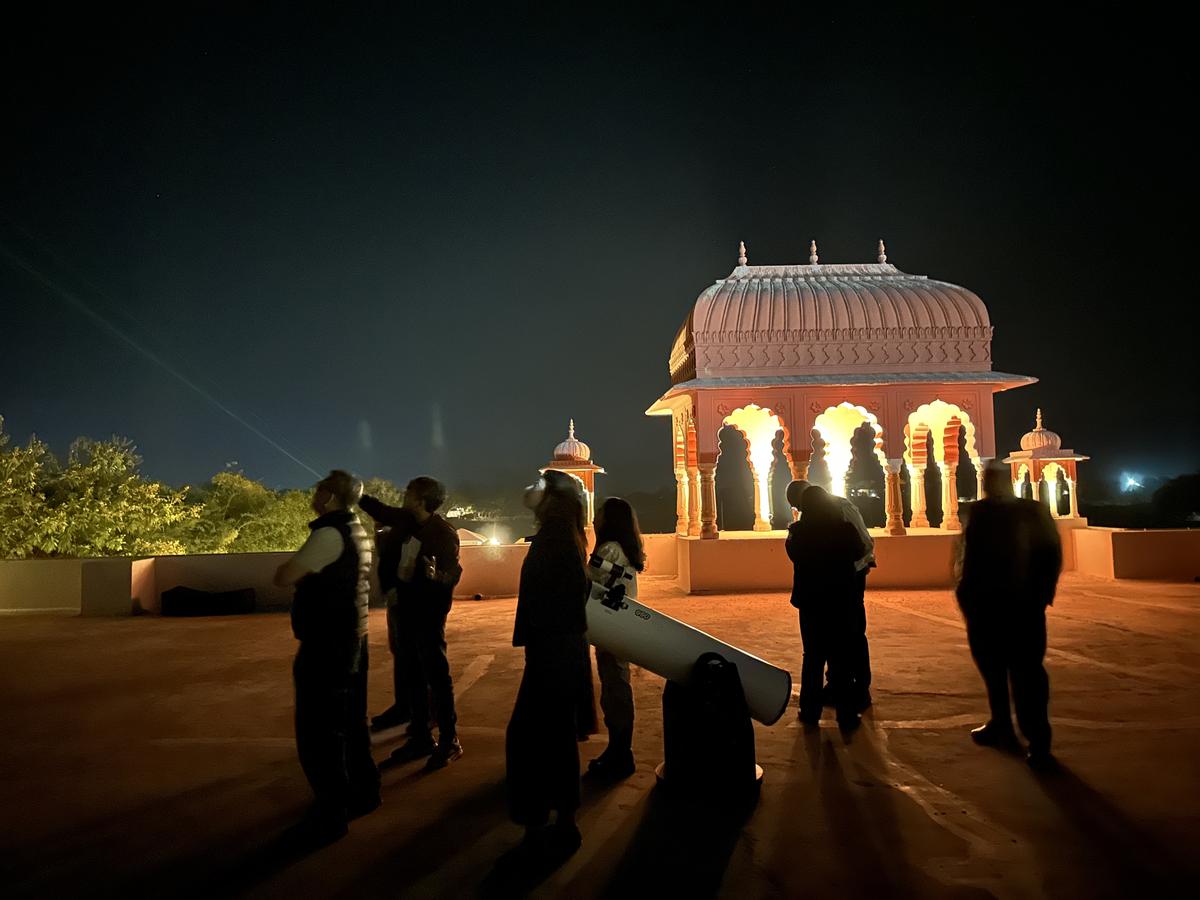
Stargazing session. , Photo Credit: Special Arrangement
Thrill of the chase
We return to the national park early the next morning and enter a different zone, allotted randomly at the time of safari booking. Although some zones have a reputation for more tiger sightings, it is never guaranteed as these animals are known to move around extensively in search of prey. A short but sharp spell of showers the previous night also means the animals are less likely to come out in search of water at dawn. We get our fill of sambar deer, langurs and peacocks and decide to briefly halt at a clearing overlooking a lake. A kingfisher perches on a broken tree branch nearby. It takes off when a painted stork lands next to it. On the opposite bank, there are chitals grazing and marsh crocodiles lying languidly in the mud.

Padam lake, one of the main sources of water for the wildlife at Ranthambhore National Park. , Photo Credit: Julie Merin Varughese
So serene is the atmosphere that at first we barely register the low growl. It is followed by a roar barely a decibel higher but enough to wake us up from our Nature-induced stupor. On full alert now, we hold our breath, phone cameras raised, ready for our first encounter with Ranthambhore’s most famous resident. Somebody sees a movement in the tall grass, another catches a flash of orange. Our guide claims there is a definite whiff of tiger scat in the air. Over the next two hours, we waited, alternating between staying put in the jeep and driving about in hopes of finding a better vantage point. The tiger doesn’t show. “Once they sit down to rest, likely after a kill or a meal, they do not move for hours together,” our guide explains.
Soon, it is time to leave and we bid goodbye to the national park with only a tinge of regret. Something about the thrill of the chase makes me smile all the way to the hotel. What a story to tell friends and family back home.
The writer was in Ranthambhore at the invitation of Bookmark Resorts Jogi Mahal.
julie.mv@thehindu.co.in
FACT FILE
, The best time to visit Ranthambhore National Park is from October to April. Safaris must be booked in advance.
, The nearest airport is Jaipur International Airport (165 km), nearest railway station is Sawai Madhopur (12 km).
, Other attractions nearby are the Rajiv Gandhi Regional Museum, Shilpgram Museum, Dastkar Ranthambhore, Palighat Chambhal Safari and Hathi Bhata.
Published – November 01, 2024 09:39 pm IST

